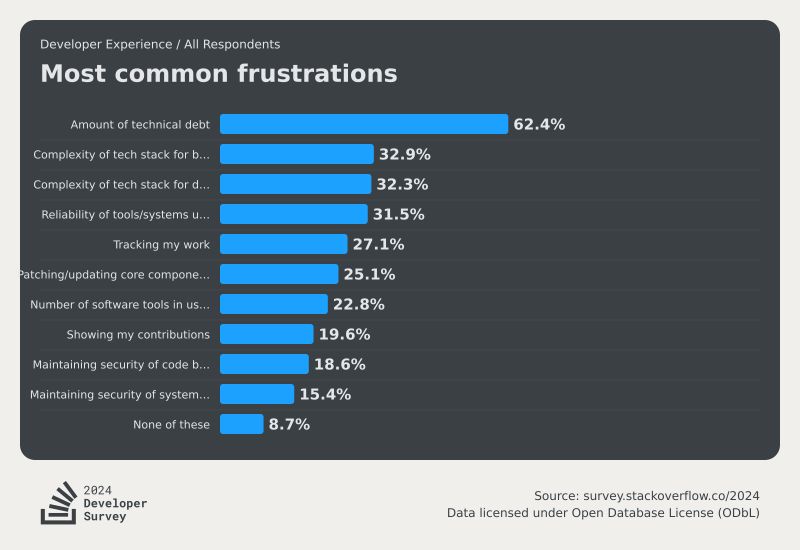Addressing Technical Debt and Enhancing Data Management Efficiency in Enterprise Applications
A frequently posed question regarding Salesforce’s #DataCloud is, “Why not develop this in-house? One can utilize Snowflake, Databricks, or managed SQL to create integrations or incorporate other off-the-shelf tools as needed.”
Before addressing this, let us consider a seemingly unrelated topic.
Recently, #StackOverflow published the findings of their 2024 Developer Survey, which highlighted the “most common frustrations” among developers. Notably, 62% of respondents identified “Technical debt” as their primary concern, with the complexity of technology stacks for building and deployment ranking second and third.

In terms of required data sources, Data Cloud does not contribute to the technical debt associated with custom integrations or proprietary coding, particularly for organisations already embedded in the Salesforce ecosystem. Almost all Data Cloud projects I have been a art of utilize out-of-the-box connectors, drag-and-drop mapping and transformation, and declarative solutions for data activation. This methodology is thoroughly documented and supported by Salesforce.
In my view, among the numerous advantages, this represents a highly compelling rationale for organisations to evaluate Data Cloud as a robust, no-code, and scalable solution for unifying and optimising their data assets. Developing a custom solution may be justifiable if an organization possesses the requisite in-house expertise and budgetary resources. However, if such capabilities are lacking, it is prudent to avoid incurring additional personnel overhead when a viable solution is readily available. Data Cloud serves as a seamless extension of the Salesforce platform with which organisations are already acquainted, thereby facilitating efficient data management without the complexities associated with bespoke development.

